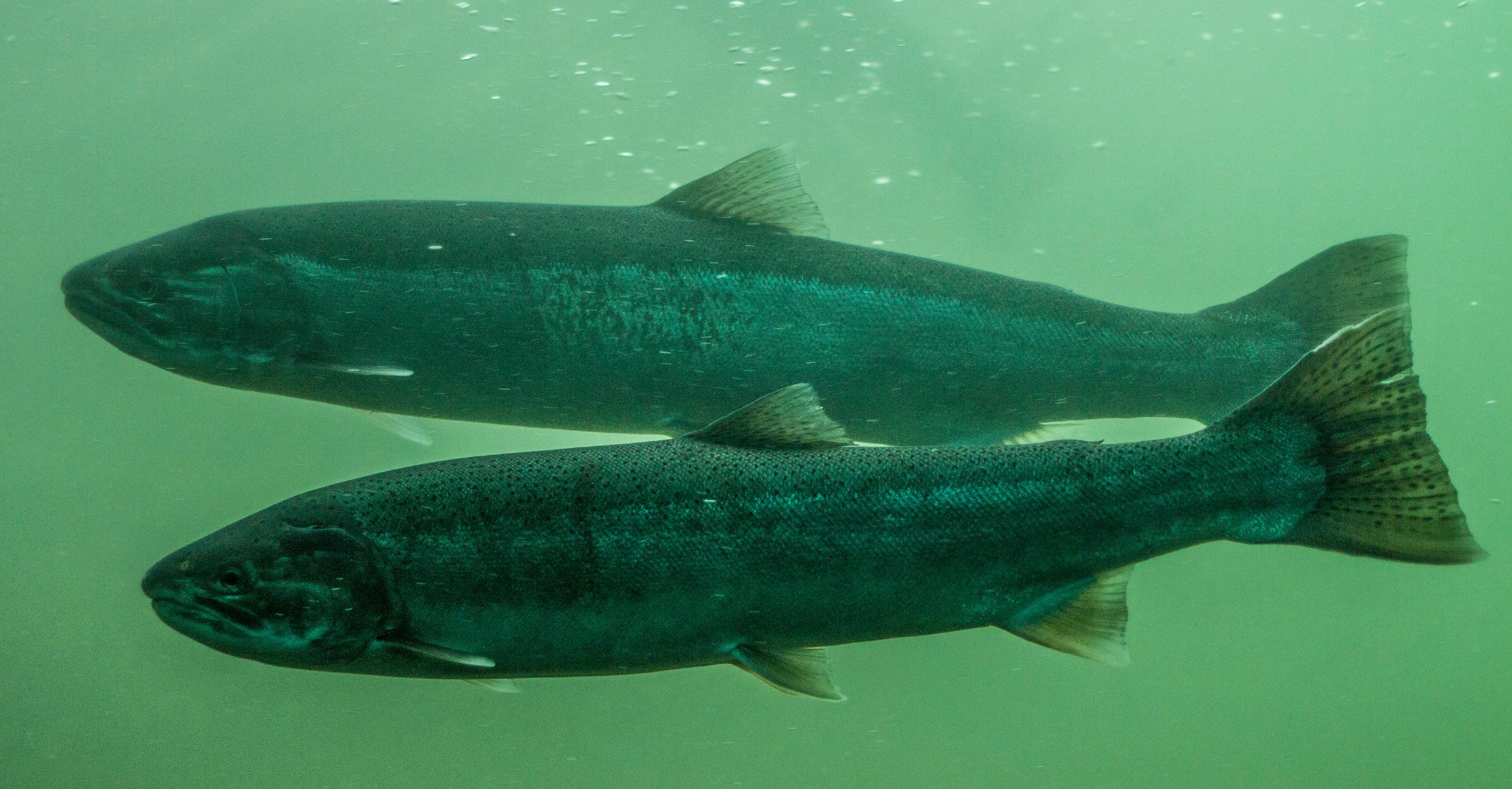
A school of salmon swim through the Bonneville Dam fish ladders.
Alan Sylvestre / OPB/Earthfix
Oregon and Washington officials are curtailing fishing starting Saturday on many of the states' rivers in hope of helping salmon, trout and steelhead survive drought conditions.
The Washington Department of Fish and Wildlife is imposing restrictions on 30 of the state's rivers. On some waterways it will be a complete closures; on others the prohibition takes effect from 2 p.m. until midnight.
The Oregon Department of Fish and Wildlife is restricting fishing times on most of the state's rivers. It's closing fishing from 2 p.m. until one hour before sunrise. A few river sections will be closed to fishing entirely.
Bruce McIntosh, deputy chief of fisheries for the Oregon Department of Fish and Wildlife, said the fish are already facing warm waters and low water flows. Several streams and rivers in Oregon have seen more fish die-offs than normal, including the Willamette, Clackamas, and Middle Fork of the John Day rivers.
"And so when we start to see those things pile up, and it's the middle of July, we really felt we needed to take the actions that we could and give the fish a break," McIntosh said.
Anglers can also take steps to reduce stress on fish, said department spokesman Rick Swart.
"Go to higher elevation lakes that are cooler. We ask people to fish early in the morning when it's cooler out," Swart said.
The weather is predicted to stay dry and hot.
"All that adds up to just really tough times for fish," McIntosh said. "We're just going to have to keep watching and hope the more normal patterns of cooling down in August, and hopefully some early rains. That would really help us out."
In addition to fishing time restrictions, starting Saturday sturgeon fishing will be closed on the Columbia and Snake rivers and adjacent tributaries from Bonneville Dam to the Oregon-Washington border. Biologists are still investigating what's happening. They suspect warm waters and low dissolved oxygen levels may be a factor.
"There doesn't seem to be any smoking gun at this point, which is always disconcerting," McIntosh said.
